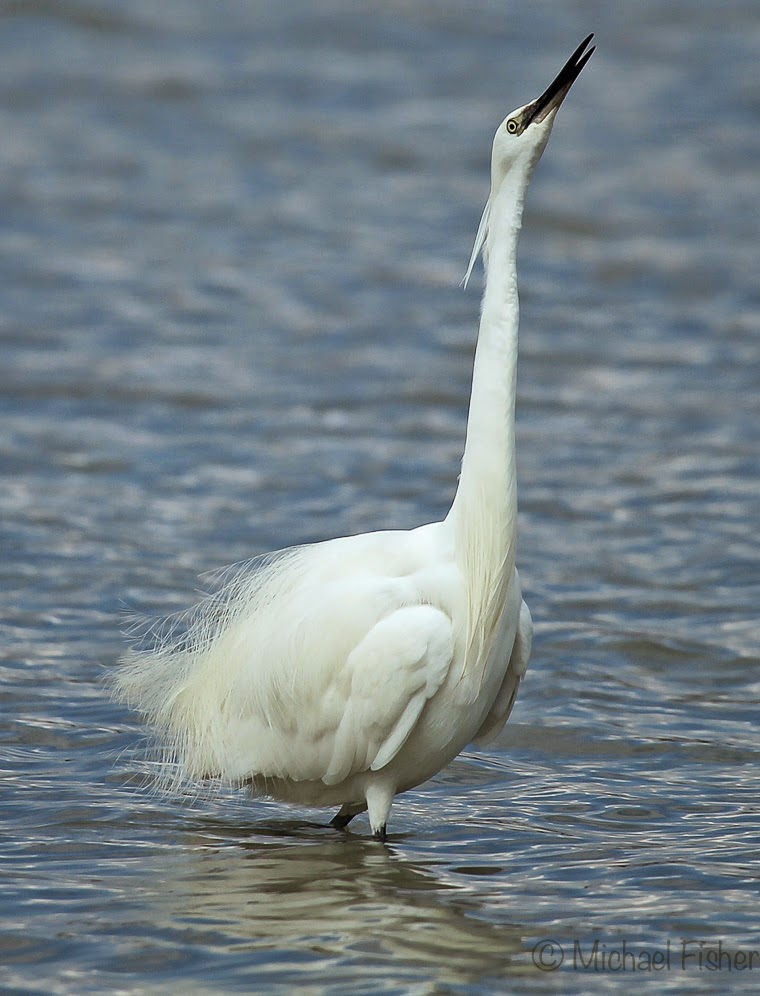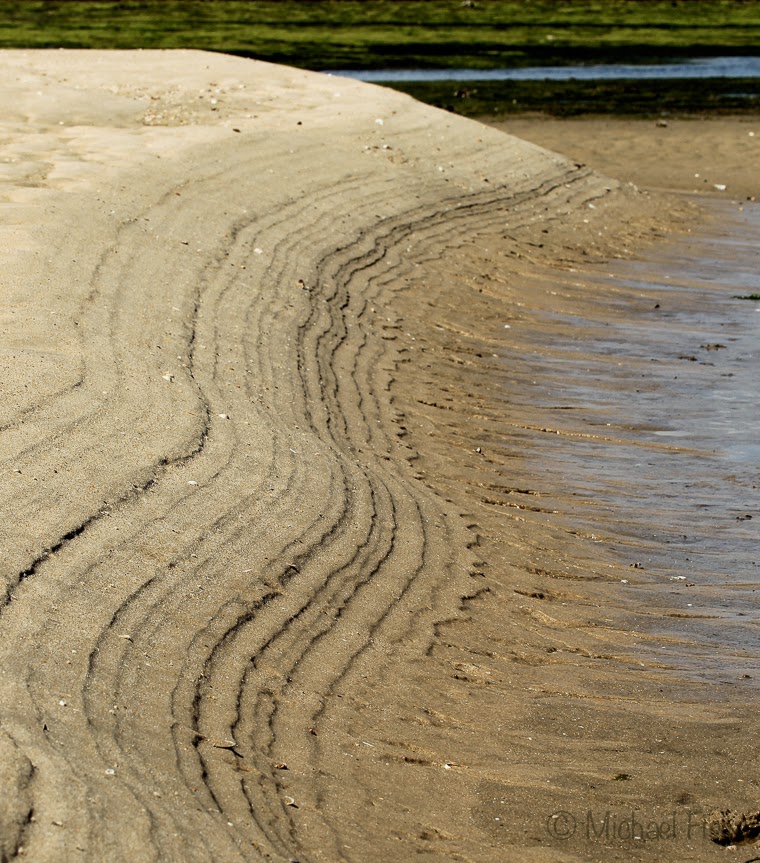The greatest journeys we make are those wonderful detours into unknown territory.
Translate
Friday 20 March 2015
The salt- pans of Tavira, a close encounter with it's nature.
Early in the morning, as we walk through the Tavira salt pans towards the sea, bird song fills the fresh morning air. High above, another aeroplane full of tourists descends into Faro airport. The moon is still in the sky. It is low tide, and waders are feeding out on the exposed mud flats.
This morning, we are in search of Fiddler Crabs.
This is the area to find the Fiddler Crab, the intertidal zone.
Here is our Fiddler Crab. In southern Portugal, we find their only European foothold (claw hold). From here to Angola in Africa, you can find them. It is also the most abundant crab in the Gambia.
They are reminiscent of vehicles used to explore far-off planets or something from a Mad Max film!
It may look like a battlefield, but there is a lot more to it. The claw is waved to attract the attention of a female, and at the same time, it is a weapon of aggressive intent to potential rivals.
The Ilha de Tavira lies across the Ria Formosa. The tide has turned between us, and soon, the Wading birds will return to the salt pans.
A little Tern hunts its prey on the rising tide.
Returning from the salt pans, we stopped to admire wildflowers.
Little Owls inhabit a derelict building.
Plants grow in the shade of some of these buildings, and we found this family of Sardinian Warblers fresh from the nest.
The male bird arrives with food for his three fledglings.
For these fledglings, this is their first day outside the comfort of that nest and the adult male is kept busy feeding and protecting them.
European Bee-eaters are now arriving. Fatigued by their migration, they rest on the warm sand on the margins of the salines.
With the changing tide, Knots find some salines with water to preen and roost.
The tide is nearly high now, and waders flock onto the salines.
Most birds are heading for these mud banks that separate the salt pans.
Knots, Dunlin and Turnstones, find resting places to await the next low tide.
Many species are out here, and we see a magnificent male Grey Plover.
Any island will do for Dunlin and Sanderling to rest.
A Curlew Sandpiper arrives looking for the company of others.
Undisturbed, these birds will settle and sleep while awaiting the tide to ebb.
The tide will make little difference to these superb Little Terns. They will hunt in the deeper saltpans and the sea.
Poised, hanging in the air.
Such concentration.
The prey is sighted, and the Little Tern plummets into the water.
Success! With a quick shake of the wings, it was gone.
Predator and prey.
A Black-winged Stilt shadow dances.
The lengthening shadows beckon, where does time go when you have a great day out!
Happy Days, indeed!
Thursday 19 March 2015
Birdwatching in the Provence of Alicante Spain.
Throughout the length of coastline that forms Pais Valencia and Murcia, there are many important wetland sites, shallow lagoons (albuferes). Today they have declined hugely,
due to tourist development and agriculture.
They are separated from the sea by the dunes, that offer a protective barrier.
Southeast of Alicante we find El Hondo. This enormous area of water (albuferes) that once stretched from the town of Elche all the way to the sea, is still one of Spain's most important wetlands, albiet smaller than in the past, it is still an impressive (2387 ha)
In close proximity are the Salines de Santa Pola, again a vast area. Because of it's size it is quite difficult to observe the birds at close range, but in the Southern corner is a area known as El Pinet. This is one of our favourite areas to photograph the regions birds and migrators, it is here that we begin our visit.
A Slender-billed Gull leads three Spoonbills against the grey February sky and distant hills.

Spoonbills, synchronised flying!
There are many Spoonbills over wintering at El Pinet.
All day long they fly from one salt pan to another, in search of the good food available here.
Close to we can see that many are ringed, this particular bird ringed in France.
Avocets join the Spoonbills.
Avocets arriving on the salt pans.
The Spoonbills and Avocets coming in for a watery landing.
A Slender-billed Gull walks on water!
Another of these handsome Gulls arrives.
One week on from Valentines day and these two Flamingos form a perfect heart!
The Little Egrets show nuptial plumage, delicate plumes formed by the two elongated nape feathers.

The distinctive yellow toes of the Little Egret.
Little Egret, just dropping in!

In the water this Little Egret is performing a mating dance, turning circles and calling.
An elusive Water Rail leaves the safety of the salt tolerant plants that enclose the salt pan fringes, and has disappeared within seconds.
The migrating Blacktailed Godwits are now starting to show their breeding colours.

Another group of Blacktailed Godwits arrive, looking for a safe feeding area out on the pans.
\

The perfect peace of early morning at El Hondo.
Just look at those eyes, a Black Necked Grebe stares back at the lens.
White-headed Ducks are a important species at El Hondo. Some years 90% of the European population can be found here. The drake with blue bill.
Female White-headed Duck.
On the South side of El Hondo, in a area called Villa Vistabella you find three hides. I love this area, even if the birds are distant, it is a pleasure to just watch the sky and changing light.
Early morning, walking to the hides the light is superb on the reeds.
In the sky above the reeds, hundreds of Crag Martins feed on flying insects. The beaks open ready to snatch the insects as they race through in their feeding frenzy.
The very verbal Little Grebes look for their food around and under the reeds.
A last look out over El Hondo and the mountains beyond.
Further south and back on the coast are the San Pedro Salines and this is the next place to visit.
This is the Mar Menor area of Murcia, known for its delightful weather, but not today! The wind howls across the Salines. I know a little corner where the birds shelter, until for the winds to abate.
Using the hire car as a hide, I settle down to wait.
I don't have to wait long, the first Ruff flies in to search for food.

A Spotted Redshank (Tringa erythropus) watches before joining the foragers.
A common Redshank (Tringa totanus) seeks the shelter of my little bay.
Another Spotted Redshank
A juvenile Ruff and a Spotted Redshank.
An arriving Ruff show a difference in plumage and size.
This Ruff quietly searches for food.
Then the moment is shattered by a testosterone charged male and a fight ensues. These contests can be very vicious.

Little Stints keep low profiles, during the fracas.
Common Sandpipers come and go undeterred by others in their search for food.
A beautiful sky to end a great days birdwatching.
due to tourist development and agriculture.
They are separated from the sea by the dunes, that offer a protective barrier.
Southeast of Alicante we find El Hondo. This enormous area of water (albuferes) that once stretched from the town of Elche all the way to the sea, is still one of Spain's most important wetlands, albiet smaller than in the past, it is still an impressive (2387 ha)
In close proximity are the Salines de Santa Pola, again a vast area. Because of it's size it is quite difficult to observe the birds at close range, but in the Southern corner is a area known as El Pinet. This is one of our favourite areas to photograph the regions birds and migrators, it is here that we begin our visit.
A Slender-billed Gull leads three Spoonbills against the grey February sky and distant hills.

Spoonbills, synchronised flying!
There are many Spoonbills over wintering at El Pinet.
All day long they fly from one salt pan to another, in search of the good food available here.
Avocets join the Spoonbills.
Avocets arriving on the salt pans.
The Spoonbills and Avocets coming in for a watery landing.
A Slender-billed Gull walks on water!
Another of these handsome Gulls arrives.
One week on from Valentines day and these two Flamingos form a perfect heart!
The Little Egrets show nuptial plumage, delicate plumes formed by the two elongated nape feathers.

The distinctive yellow toes of the Little Egret.
Little Egret, just dropping in!

In the water this Little Egret is performing a mating dance, turning circles and calling.
An elusive Water Rail leaves the safety of the salt tolerant plants that enclose the salt pan fringes, and has disappeared within seconds.
The migrating Blacktailed Godwits are now starting to show their breeding colours.

Another group of Blacktailed Godwits arrive, looking for a safe feeding area out on the pans.
\

The perfect peace of early morning at El Hondo.
Just look at those eyes, a Black Necked Grebe stares back at the lens.
White-headed Ducks are a important species at El Hondo. Some years 90% of the European population can be found here. The drake with blue bill.
Female White-headed Duck.
On the South side of El Hondo, in a area called Villa Vistabella you find three hides. I love this area, even if the birds are distant, it is a pleasure to just watch the sky and changing light.
Early morning, walking to the hides the light is superb on the reeds.
In the sky above the reeds, hundreds of Crag Martins feed on flying insects. The beaks open ready to snatch the insects as they race through in their feeding frenzy.
The very verbal Little Grebes look for their food around and under the reeds.
A last look out over El Hondo and the mountains beyond.
Further south and back on the coast are the San Pedro Salines and this is the next place to visit.
This is the Mar Menor area of Murcia, known for its delightful weather, but not today! The wind howls across the Salines. I know a little corner where the birds shelter, until for the winds to abate.
Using the hire car as a hide, I settle down to wait.
I don't have to wait long, the first Ruff flies in to search for food.

A Spotted Redshank (Tringa erythropus) watches before joining the foragers.
A common Redshank (Tringa totanus) seeks the shelter of my little bay.
Another Spotted Redshank
A juvenile Ruff and a Spotted Redshank.
An arriving Ruff show a difference in plumage and size.
The Ruff are already showing that the mating season is close. Hopefully we may see them and capture their lek, when we travel to Finland.
Even the young birds have the actions of the lek.
This Ruff quietly searches for food.
Then the moment is shattered by a testosterone charged male and a fight ensues. These contests can be very vicious.

Little Stints keep low profiles, during the fracas.
Common Sandpipers come and go undeterred by others in their search for food.
A beautiful sky to end a great days birdwatching.
Subscribe to:
Posts (Atom)







































































